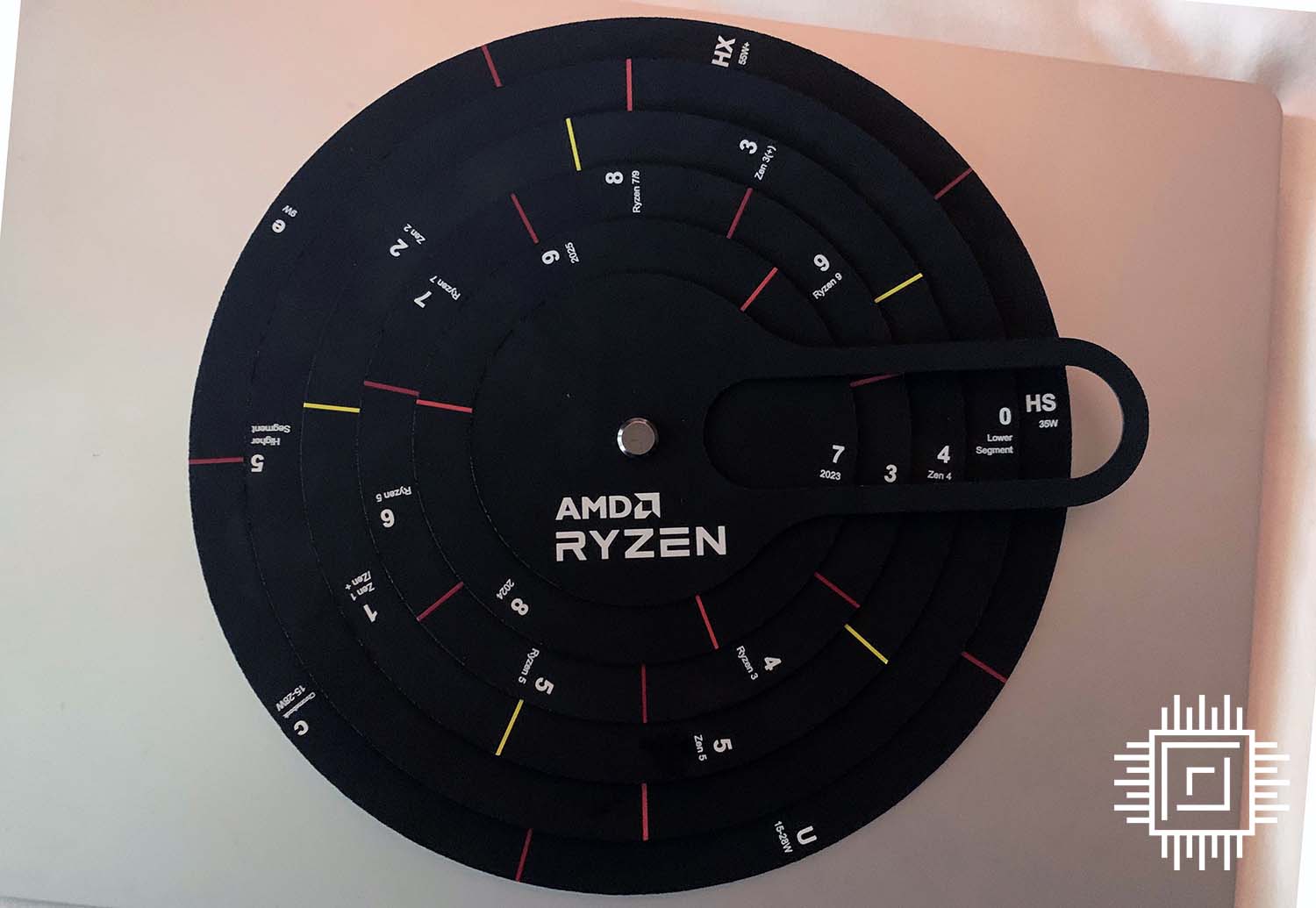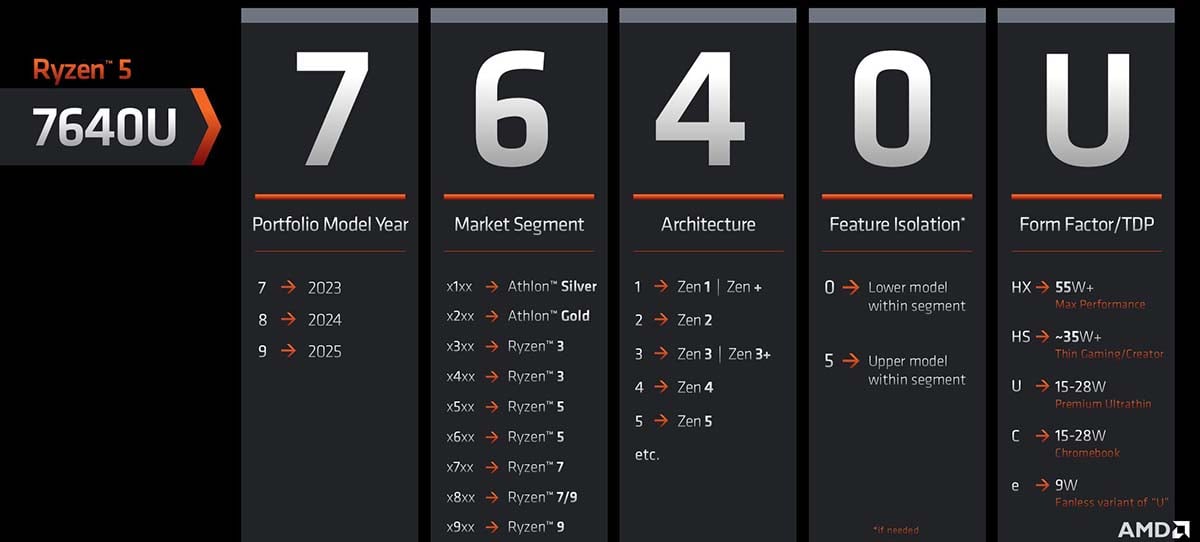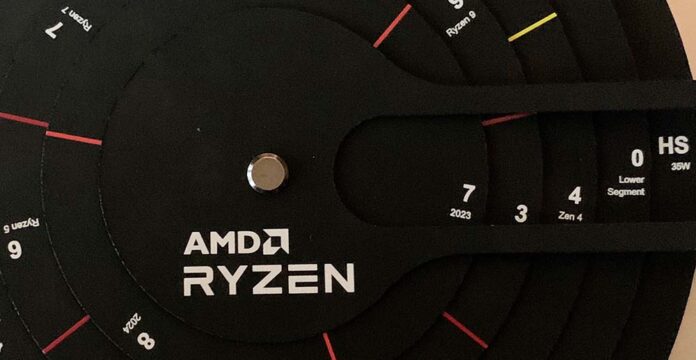At the recent Ryzen 7000 Series unveil event in Austin, Texas, AMD took the opportunity of briefing select press on how it intends to number Ryzen Mobile processors from 2023 onwards. The new system, it hopes, makes it easier for consumers to understand what they’re buying.
Though it is meant to be simpler, AMD handed out configurable ‘wheels’ to illustrate its thinking. Here is ours from the event.

Analysis
Future Ryzen Mobile processors will contain four numbers and then a suffix. Not much different from now, you may wager, but the devil is in the details.
The first number will represent the general year of introduction, save for some corner cases. This means 2023’s complement will start with a ‘7’, 2024’s with an ‘8’ and 2025’s with a ‘9.’ What happens after that is yet to be determined. Easy so far, right?
The second number relates to the general performance level of the processor. You’ll see options going from ‘3’ right the way up to ‘9,’ with the intimation higher numbers are better. ‘3’ and ‘4’ can only be Ryzen 3, ‘5’ and ‘6’ only Ryzen 5, while Ryzen 7 can be either ‘7’ or ‘8.’ Last but not certainly least, Ryzen 9 models will feature either an ‘8’ or ‘9’ in their model numbers. With me so far.
Big changes are afoot in the third number because it relates to the architecture employed. This is clear departure from the present system. For example, a Zen 4-architectured mobile chip will have the number ‘4’ and Zen 5, when released, the number ‘5.’ This is why it ought to be impossible to have, say, a Ryzen Mobile 735xx next January – Zen 5 is not scheduled for arrival until much later.
The fourth number, meanwhile, dictates whether it’s a ‘lower’ or ‘higher’ segment processor. There are only two options: 0 and 5, much like we have today.
Finally, the last piece in the jigsaw is the actual segment the processor is destined for. Options include ‘e’ for low-power chips consuming no more than 9W, ‘c’ for Chromebooks whose chip TDP ranges from 15-28W, ‘U’ for regular laptops with the same processor power requirement, ‘HS’ for higher-performance models for gaming notebooks, and ‘HX’ for best-in-class mobile processors utilising 55W+.
That’s a fair bit to take in, of course, so let’s roll out some real-world examples. An upcoming Ryzen Mobile 7745HS is translated as a 2023 model, of the Ryzen 7 vintage, equipped with Zen 4 technology, occupying the higher-performing segment, and designed for gaming notebooks where a 35W CPU is ideal.
How about a Ryzen Mobile 8955HX. Deliberately reading it out anachronistically, that’s a Zen 5-based Ryzen 9 model coming in 2024 and primed for full-on gaming or content creator laptops. Easy when you know how.

AMD cites its own example of a Ryzen 5 7640U, detailed above.
It’s good to see AMD be transparent about which technology is being used in upcoming mobile processors, but other than that, the new model numbering doesn’t add a great deal. Then again, the present system generally worked fine.
What are your thoughts? Does AMD’s new mobile system numbering make sense, and would you like to see it implemented on the desktop?

